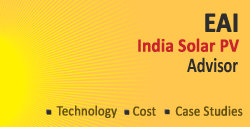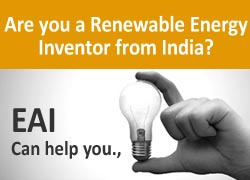Wave Powered Buoyancy Engine
Background Of The Invention
There are essentially two forms of energy generally associated with sea waves one form of energy is associated with the motion of the wave and the other is the energy associated with the hydrostatic head between the crest and trough of the wave. The wave power plants attempt to use one or both these forms to produce power. The power available from each wave is proportional to the square of the wave height and the wave period.
Considering only the sinusoidal wave motion of the sea waves the power in such a wave accepted to be as given by the formulae:
P = r g2 T H2 / 32p
Where:
P = power per unit crest length of wave (KW/M),
r = density of sea water,
T = Time between successive crests,
g = acc. Due to gravity, H = height of the wave.
Based on the above formulae the wave energy map of the world is mapped as under.
It is seen that countries in Europe, Australia South America and Japan are better placed to take advantage of this abundant natural source of energy.
Since the acceptance of the Kyoto Protocol there has been renewed interest in development and implementation of ocean wave energy systems. Notable are the efforts of Portugal and England in committing huge resources (14 million pounds) towards the deployment of the ‘Pelamis’ ocean wave power system.
India too has a system based on the oscillating water column (OWC) near the Kovalam beach, which has added both experience and knowledge to our scientists and engineers, engaged in the field of ocean wave power.
The formulae P = r g2 T H2 / 32p attempts to estimate the energy in a wave by considering that all the energy of the wave is on account of the circular motion of water particles inside the wave as described below.
Looking at the world ocean wave energy map, based on the conventional equation for determining the energy in ocean waves, it would appear that some countries and regions of the world are at a disadvantage. Such regions and countries would obviously give lower priority to the development of ocean wave power projects.
However the situation can be greatly altered when we begin to look at ocean wave power in conjunction with a float. No longer then are we constrained by the conventional equation for the energy in ocean wave.
The sinusoidal movement of sea water is not really considered as any serious source of energy because it is considered to be a zero energy movement of water.
Concept of The Wave Powered Buoyancy Engine.
A float experiences a force of buoyancy, which is the difference between its weight and the weight of the water that the float displaces.
The float responds to the periodic rise and fall of wave motion of sea waves. The force of buoyancy moves through the distance of the wave height. As a result, the float performs work equal to the product of the force of buoyancy and the wave height through which the force has moved.
Thus, a float on the surface of the sea is a prime mover, as long as the weight on the float does not exceed the force of buoyancy.
For example 5 liter float carrying a weight of 2Kg or 50 liter float carrying a 18 Kg Weight. The force of 2 Kg. Weight or the force of 18 Kg Weight would move upwards through the wave height.
The float would move vertically up and down with the sea wave as long as the loading of the float does not exceed the buoyant force of the float
A float on the sea surface that is allowed movement only in the vertical direction and is otherwise sufficiently secured could drive a pump, as long as the pump, loads the float, with a force that is less than the buoyant force.
A collection of such float-pumps could be configured to say pressurize a fluid that may then be made to do useful work.
Alternatively the vertical movement of the buoyancy force could be used to generate electricity directly through suitably modified electrical generators.
Test of Concept.
In a test of concept a 5 liter air tight plastic can and a 50 liter air tight plastic can were so configured that these floats were allowed motion only in the vertical direction on a graduated slide rail.
Both these floats responded to the motion of the sea waves, rose and fell along with the crest and trough of the wave.
The 5 liter float was then loaded with a 2 Kg. Weight.
The float continued to rise and fall with each passing wave, of wave height 0.5 meter the weight rose in 1 second, producing power of 10 watts per wave.
(2Kg. x 10 m/sec2 x 0.5 Meter/ 1 sec = 10 Watts per wave.)
The 50 liter float was loaded with 18 Kg. weight.
The float continued to rise and fall with each passing wave of wave height 0.5 Meters and the weight rose in 1 second producing 90 watts per stroke.
(18 Kg. x 10 m/sec2 x 0.5 Meter/ 1 Sec. = 90 Watts per wave.)
Implications Of The Wave Powered Buoyancy Engine.
When ocean wave power is used in conjunction with a float any sea face has the potential of being used as a substantial source of usable energy. This awareness will help the planners to take a serious re-look at ocean wave power and upgrade the priority it assigns to it in India.
The technology that is required to develop this method is available at almost all the coastal towns in India, the local engineering colleges and technical institutes can take it up as a project.
Alternatively large corporations can also develop this energy source.
Advantages Of the Wave Powered Buoyancy Engine
1) The Wave Powered Buoyancy Engine is a serious source of clean renewable energy.
2) The technology to utilize this source of energy is available.
3) The Wave powered Buoyancy Engine does not disturb the environment at all as it is a zero emission source of energy.
4) Such an effort would be greatly and rightly encouraged by an interest your esteemed may take in it.
The Task Ahead
- To design and fabricate floats of 1000 liters capacity and to observe their response to waves, when loaded with weights less than their buoyant force.
- To design or select the compressors that would be suitable.
- To choose the correct working fluid for the compressors.
- Alternatively design suitable electrical generators that convert the vertical up down motion of the float to electricity.
- To estimate the power that could be made available using a system of such floats.
- To calculate the cost of constructing a power plant based on this approach.
- To evaluate the cost benefits both in terms of commerce and ecology by the implementation of such an approach.
Note:
The test was filmed and is present on the video CD (7 min. viewing time) the video CD will be sent to you through courier
The former President Of India Shri A P J Abdul Kalam had viewed the same CD and his office had asked that the approach be taken up.
Name: Adess Singh.
Email address: adesssingh@rediffmail.com
Telephone # 0172 2229085
Mobile # 09417016945
Address: House # 1179 1st Floor
Phase 5
Mohali. (Near Chandigarh) 160059






 Free EAI Newsletter
Free EAI Newsletter
